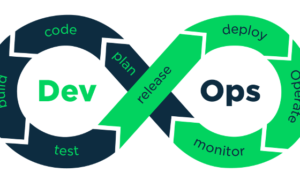In the age of digital innovation and rapid technological advancements, the traditional labor market is undergoing a seismic shift. The emergence of the gig economy, defined by short-term contracts and freelance work, stands in stark contrast to the conventional model of permanent employment. Driven by a surge in online platforms and mobile apps, the gig economy has revolutionized the way we work, offering unparalleled flexibility and opening up a myriad of new opportunities for individuals to monetize their skills. From Uber drivers and Airbnb hosts to freelance writers and consultants, the gig economy has reshaped the work landscape and is forcing us to reconsider what it means to have a career. But what are the implications of this new paradigm? What are the benefits and challenges that come with this newfound flexibility? As the gig economy gains momentum, it is crucial that we delve deeper into its intricacies and explore how it is transforming the world of work.
Understanding the Gig Economy
The gig economy refers to a labor market characterized by the prevalence of short-term contracts and freelance work, as opposed to permanent employment. It is driven by technological advancements, such as online platforms and mobile apps, that connect workers with employers seeking specific services. These platforms, such as Uber, Airbnb, and Upwork, have revolutionized the way people find work and have created new opportunities for individuals to monetize their skills.
One of the defining features of the gig economy is the flexibility it offers. Workers can choose when, where, and how much they want to work, allowing them to balance their personal and professional lives more effectively. This flexibility is particularly appealing to millennials and younger generations who prioritize work-life balance and value experiences over traditional career paths.
The Benefits of Freelancing and Contract Work
The gig economy has numerous benefits for both workers and businesses. For workers, freelancing and contract work provide greater control over their careers. They can choose projects that align with their skills and interests, and have the freedom to set their own rates and working hours. This level of autonomy can lead to increased job satisfaction and a better work-life balance.
Freelancing also offers the potential for higher earnings. According to a study by Upwork, 59% of freelancers reported earning more than they did in traditional employment. This is often attributed to the ability to negotiate higher rates and take on multiple projects simultaneously. Additionally, freelancers can deduct business expenses from their taxes, potentially reducing their overall tax burden.
For businesses, the gig economy provides access to a diverse pool of talent. They can tap into a global network of freelancers with specialized skills, without the need for long-term commitments or expensive recruitment processes. This flexibility allows businesses to scale their workforce up or down quickly in response to changing market conditions, reducing labor costs and increasing agility.
The Impact on the Labor Market
The gig economy has had a profound impact on the labor market, disrupting traditional employment models and creating new opportunities. While some argue that the gig economy has led to the erosion of job security and the proliferation of low-paying, precarious work, others believe it has opened up new avenues for economic growth and innovation.
One of the key effects of the gig economy is the rise of independent contractors and freelancers. According to a report by Intuit, by 2020, 40% of American workers will be independent contractors. This shift towards non-traditional employment has implications for social safety nets and labor laws, as many gig workers do not have access to benefits such as healthcare, retirement plans, or unemployment insurance.
However, the gig economy has also created opportunities for individuals who may have struggled to find traditional employment. For example, stay-at-home parents, retirees, and individuals with disabilities can now participate in the workforce on their own terms, leveraging their skills and expertise to earn income.
Challenges and Concerns
While the gig economy offers many benefits, it is not without its challenges and concerns. One of the main concerns is the lack of employment protections and benefits for gig workers. Without the safety net provided by traditional employment, gig workers are vulnerable to income volatility, lack of access to healthcare, and limited retirement savings.
Another challenge is the potential for exploitation and unfair treatment of gig workers. Some platforms have been criticized for setting low wages, imposing strict performance metrics, and providing limited recourse for disputes. This has led to calls for greater regulation and worker protections in the gig economy.
Additionally, the gig economy can exacerbate income inequality. While some gig workers thrive and earn high incomes, others struggle to make ends meet. The lack of stability and consistent income can make it difficult for gig workers to plan for the future and achieve financial security.
The Future of Work
The rise of the gig economy represents a significant shift in the labor market, characterized by greater flexibility, autonomy, and an increased focus on individual skills. Its integration into the mainstream labor market will likely result in several key developments, including hybrid work models and the emergence of new platforms and technologies designed to address the challenges associated with gig work.
Hybrid Work Models
In the future, more workers may adopt hybrid work models that combine traditional employment with freelance or contract work. This approach allows individuals to enjoy the stability, benefits, and protections associated with traditional employment while also pursuing their passions and entrepreneurial ventures in the gig economy. By diversifying their income sources and expanding their skill sets, hybrid workers can build a more resilient and fulfilling career. Employers may also benefit from these arrangements by gaining access to specialized skills and expertise that may not be available within their full-time workforce.
New Platforms and Technologies
As the gig economy continues to grow, new platforms and technologies will likely emerge to address the unique challenges faced by gig workers. These platforms may offer features such as portable benefits, fairer compensation models, and transparent dispute resolution mechanisms.
- Portable Benefits: One significant issue in the gig economy is the lack of access to traditional benefits like healthcare, retirement plans, and paid time off. New platforms may explore ways to offer portable benefits, allowing gig workers to carry their benefits with them regardless of the platform or employer they work for. This could help bridge the gap between traditional and gig work, providing more security and stability for gig workers.
- Fairer Compensation Models: Some platforms have been criticized for setting low wages or imposing strict performance metrics on gig workers. In response, new platforms may adopt fairer compensation models that take into account factors such as experience, skill level, and market demand. This could result in higher and more equitable earnings for gig workers.
- Dispute Resolution Mechanisms: Gig workers may face challenges in resolving disputes with clients or platforms, especially when it comes to issues like payment, contract terms, or performance evaluations. New platforms may implement transparent and efficient dispute resolution mechanisms to protect the rights and interests of gig workers.
- Changing Legal and Regulatory Landscape: As the gig economy becomes increasingly integrated into the mainstream labor market, legal and regulatory frameworks may need to evolve to reflect the changing nature of work. Policymakers may explore ways to extend labor protections and social safety nets to gig workers, classify gig workers in a way that reflects their unique work arrangements, and create an environment that supports the growth and development of the gig economy.
These developments will help address the challenges associated with gig work and create a more inclusive and equitable labor market.
Summary
In conclusion, the gig economy has emerged as a transformative force in the labor market, bringing both opportunities and challenges to workers and employers alike. Its rise has been facilitated by technology, which has connected people and created new avenues for monetizing skills, even for those who may have struggled to find traditional employment. While the gig economy offers flexibility, autonomy, and potential for higher earnings, it also raises concerns about job security, income volatility, and lack of employment protections.
The future of the gig economy is likely to be shaped by a combination of factors, including technological advancements, changing attitudes toward work, and regulatory developments. As the gig economy continues to evolve, it will be important for policymakers, businesses, and workers to collaboratively address the challenges and seize the opportunities it presents. Embracing hybrid work models, implementing fair compensation practices, and providing access to benefits for gig workers are just a few ways we can create a more inclusive, equitable, and resilient gig economy. Ultimately, the goal should be to strike a balance between fostering innovation and flexibility, and ensuring the well-being and rights of all participants in this rapidly changing landscape.



































